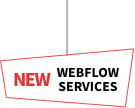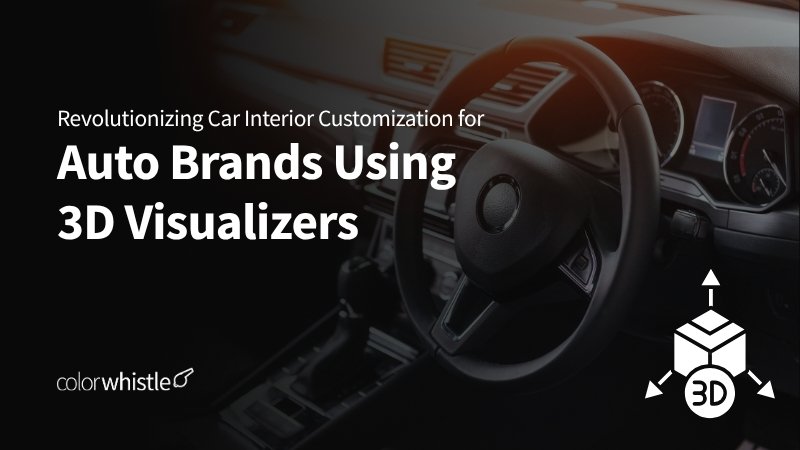In the ever-changing field of modern web UI design, it’s always a good idea to keep an eye on what designers produce. Having up-to-date examples of excellent dashboard UIs is critical if you want to stay ahead of the competition and deliver exceptional user experiences.
Today, we’re here to share some fantastic dashboard UI examples that may inspire your own work! Read on for our top picks from around the world. From minimalist visuals and clever usage of grids, all the way through to robust data visualization techniques, these designs show off how powerful dashboards brands can be when executed correctly.
So get ready for some serious inspiration!
Dashboard Applications are Super Useful!
Dashboard Applications are the face of any business that operates with a large amount of data — be it customer, finance, inventory, etc. There are multiple benefits that you can enjoy with a dashboard application.
A dashboard application can help you
- Save time by giving you quick and easy access to the information that you need.
- Make better decisions by providing you with up-to-date information.
- Improve your productivity by helping you to track your progress and goals.
- Stay organized by keeping all of your information in one place.
- Communicate better by providing a central location for sharing information.
- Collaborate better by allowing multiple users to access and edit information.
- Reduce errors by providing accurate and up-to-date information.
- Increase efficiency by automating tasks and processes.
- Improve customer satisfaction by providing them with the information they need, when they need it.
- Reduce costs by eliminating the need for manual processes and paper-based reporting
There are custom benefits that your business can get by developing a dashboard application.
Be it a customized dashboard that shows data about a particular item, the overall purchase pattern for one product, the number of users online in your application, or the number of users on a specific page — all these details are retrievable and trackable via a dashboard application.
Also Read
Dashboard Application UI Design – What to Consider When you Start Designing
The purpose of the dashboard
Before designing a dashboard, it is important to first understand its purpose.
What information do you want to convey with the dashboard?
What decisions do you want users to be able to make with the dashboard?
Once you have a clear understanding of the purpose of the dashboard, you can begin to design it.
The target audience of the dashboard
Another important consideration is the target audience of the dashboard.
Who will be using the dashboard?
What level of technical expertise do they have?
What are their specific needs and goals?
Understanding the target audience will help you design a dashboard that is easy to use and interpret.
The data that will be used in the dashboard
Another key consideration is the data that will be used in the dashboard.
What data do you need to include in order to achieve your goals?
How will you obtain this data? How often will it need to be updated?
Answering these questions will help you design a dashboard that is both informative and efficient.
The layout of the dashboard
Once you have considered all of the above factors, you can begin to think about the layout of the dashboard.
How should the information be presented?
What are the most important elements that need to be included?
How can you make the dashboard easy to use and interpret?
Taking time to consider these questions will help you create a successful and user-friendly dashboard.
The visualizations that will be used in the dashboard
After determining the layout of the dashboard, you need to decide on the visualizations that will be used.
What types of charts and graphs will best represent your data?
How can you make sure that your visualizations are easy to understand?
Spending time on this step will ensure that your dashboard is both visually appealing and informative.
The interactivity of the dashboard
Another important consideration is interactivity.
How can users interact with your dashboard?
What type of interactions would be most beneficial?
Including interactive elements such as filters and drill-downs can make your dashboard more user-friendly and allow users to customize their experience.
The navigation of the dashboard
When designing a dashboard, it is also important to think about how users will navigate around it.
How easy will it be for users to find what they are looking for?
How easy will it be for them to move from one section to another?
Creating a well-designed navigation system will help ensure that users can easily find and use all of the features of your dashboard.
The performance of the dashboard
Another key consideration when designing a dashboard is performance.
How quickly do you want your dashboard to load?
How smoothly do you want it to operate?
Keep in mind that dashboards often contain large amounts of data and complex visualizations, so it is important to design them in such a way that they perform well even on slow internet connections and older computers.
Mobile-friendliness
In today’s world, it is important to design for mobile devices as well as desktop computers.
More and more people are using their smartphones and tablets to access information online, so it is important to make sure that your dashboard is mobile-friendly.
This means designing for smaller screens, touch interactions, and slower internet speeds.
Security
If your dashboard contains sensitive information, it is important to consider security when designing it.
There are many ways to secure a website or application, so it is important to choose an approach that best fits your needs.
Some common security measures include password protection, SSL encryption, and two-factor authentication.
The branding of the dashboard
If you are creating a corporate dashboard, it is important to consider branding.
How can you ensure that your dashboard reflects your company’s brand identity?
Including your company’s logo and colors can help create a sense of cohesion between your dashboard and your overall brand identity.
Hosting
Finally, once your dashboard is designed, you need to decide where it will be hosted.
If you are using an existing website or application, you may already have a hosting solution in place.
However, if you are creating a new Dashboard UI, you will need to choose a hosting provider. There are many options available, so it is important to compare features and pricing before making a decision.
13+ Modern Dashboard Design Examples, Dashboard Apps UI Design Ideas

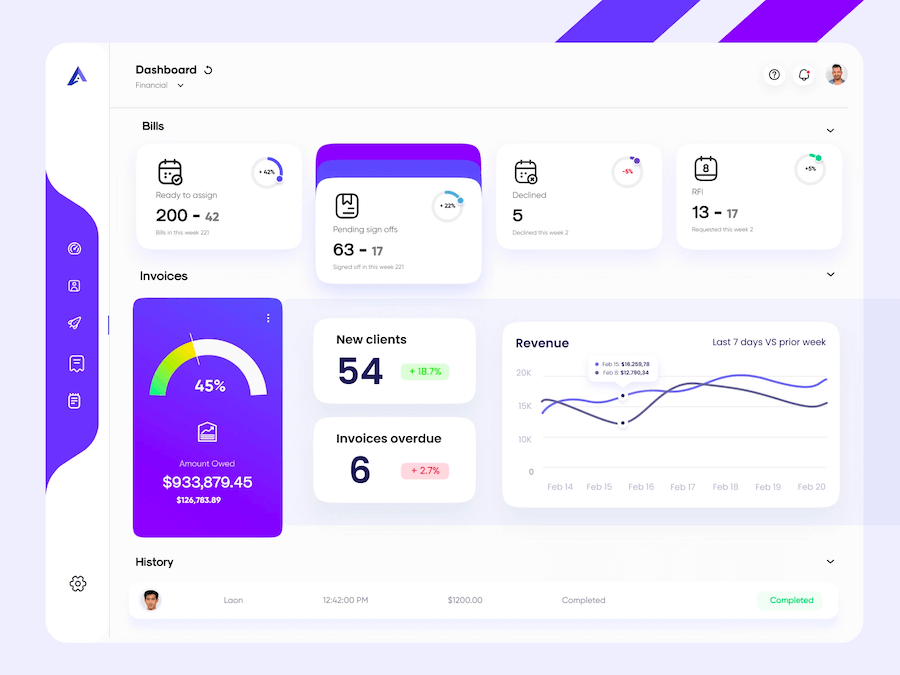
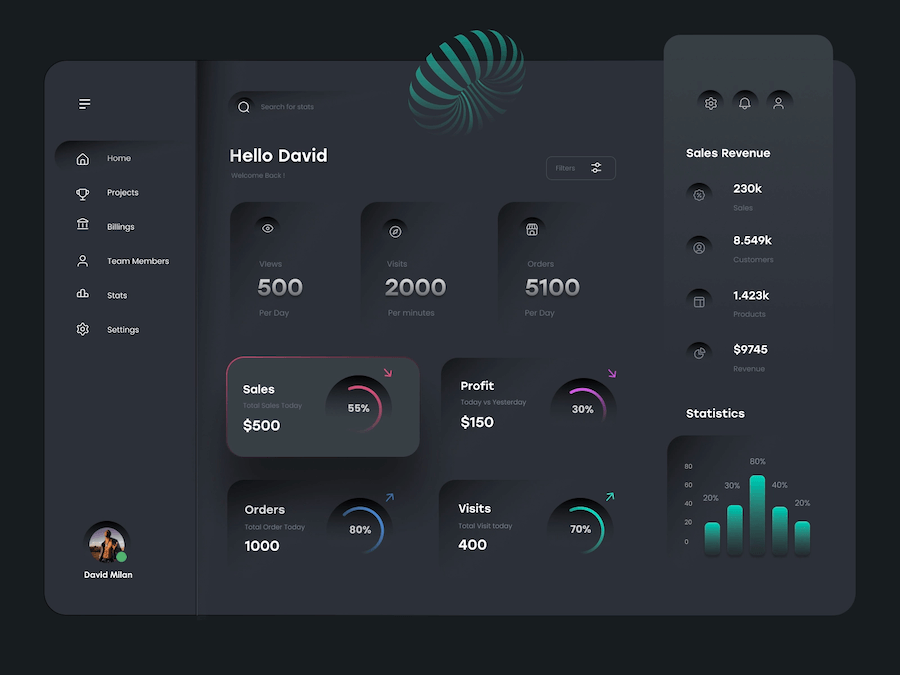
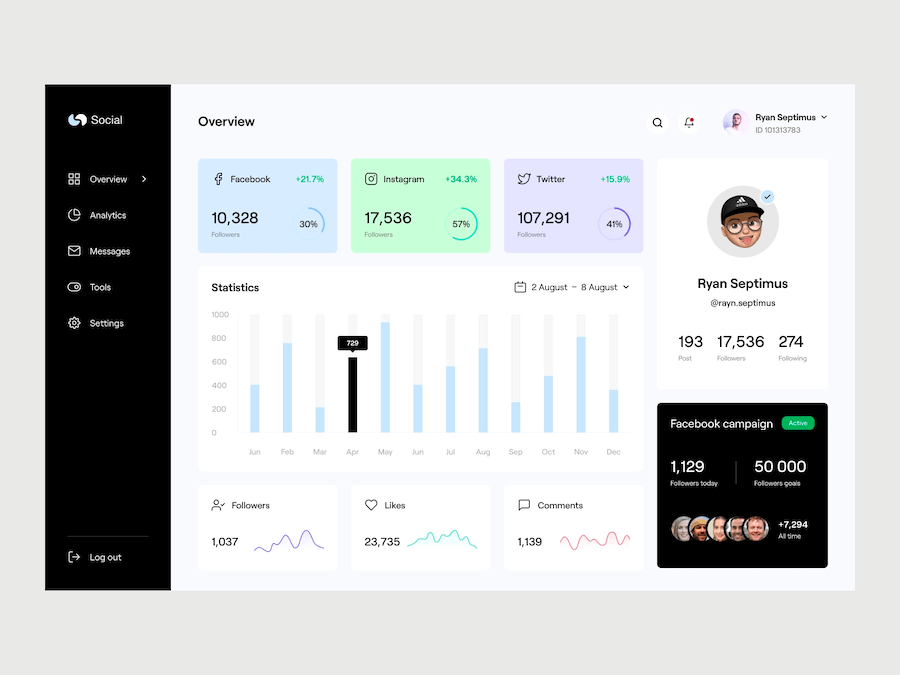

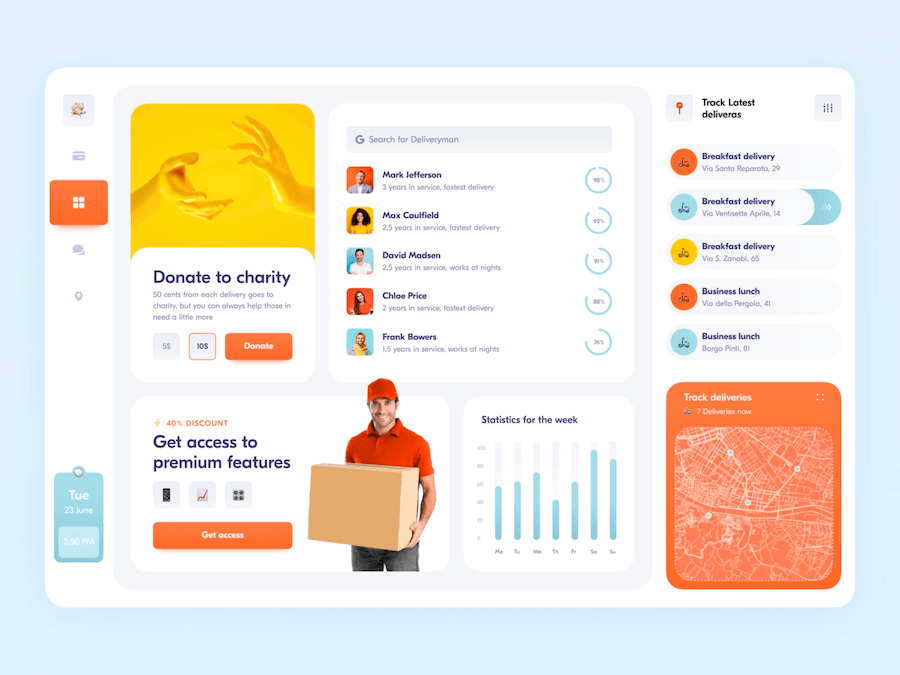


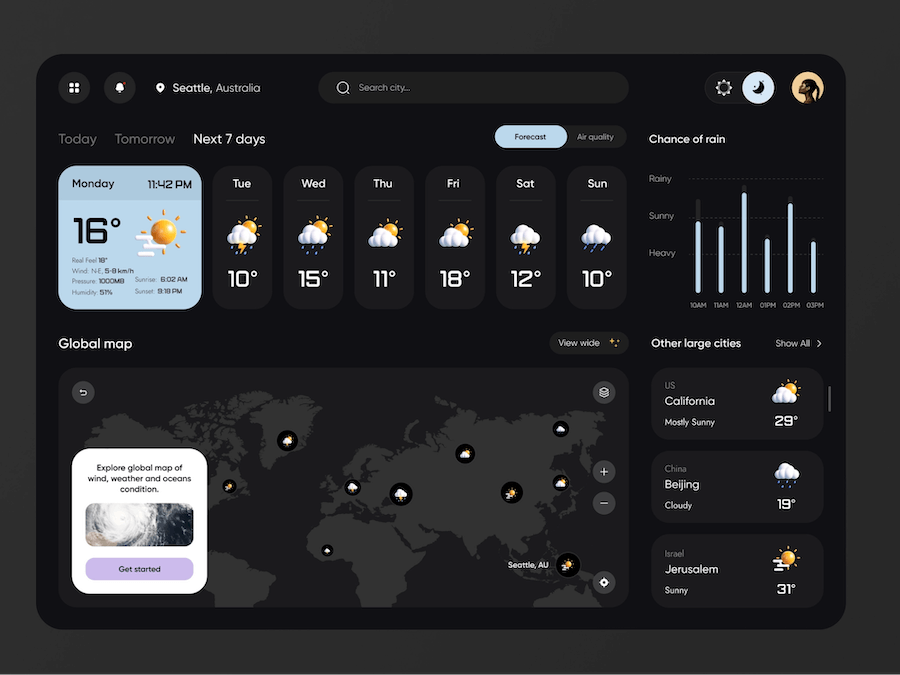
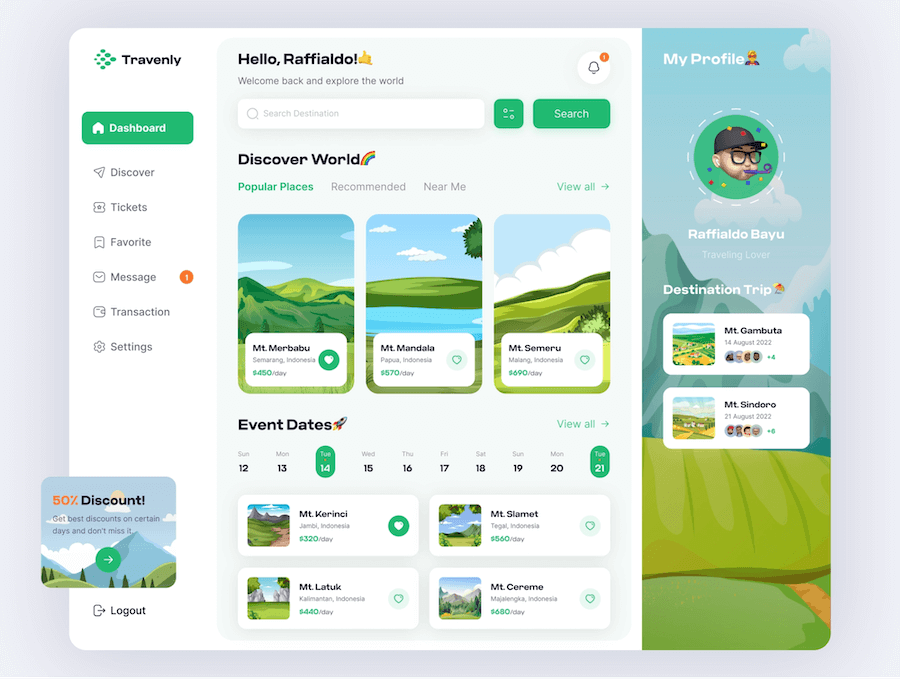
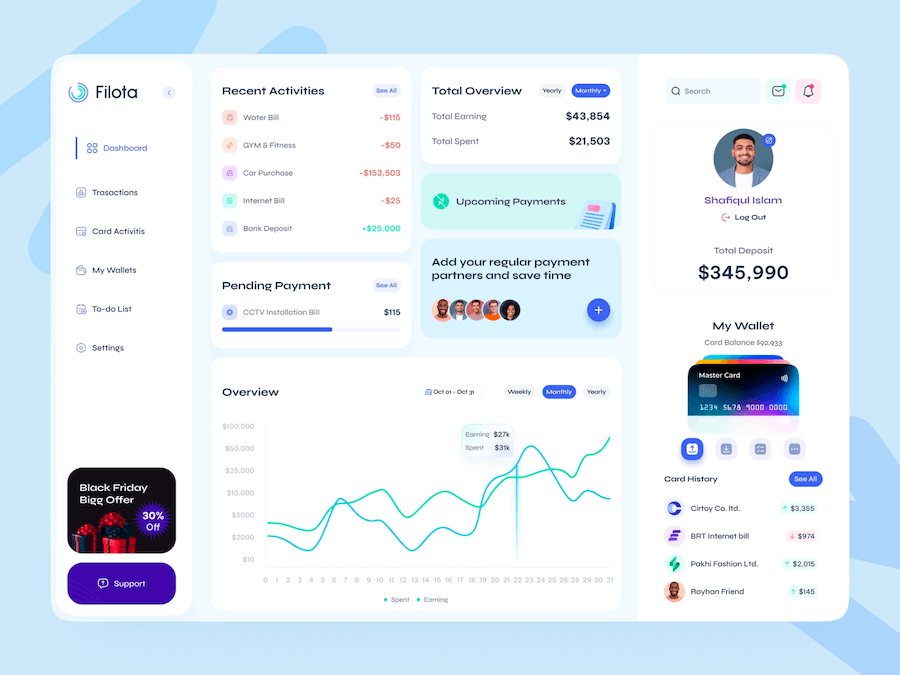
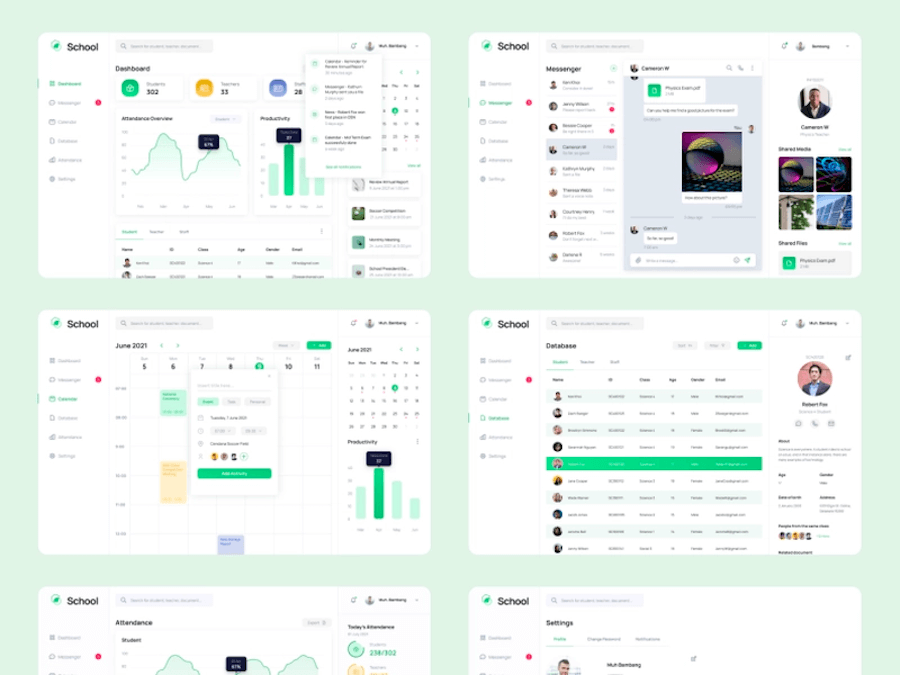
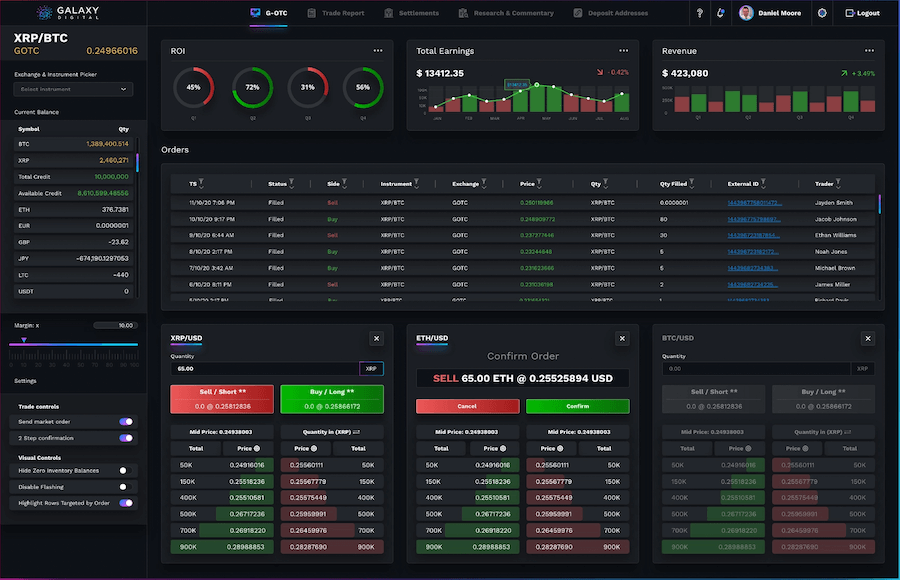
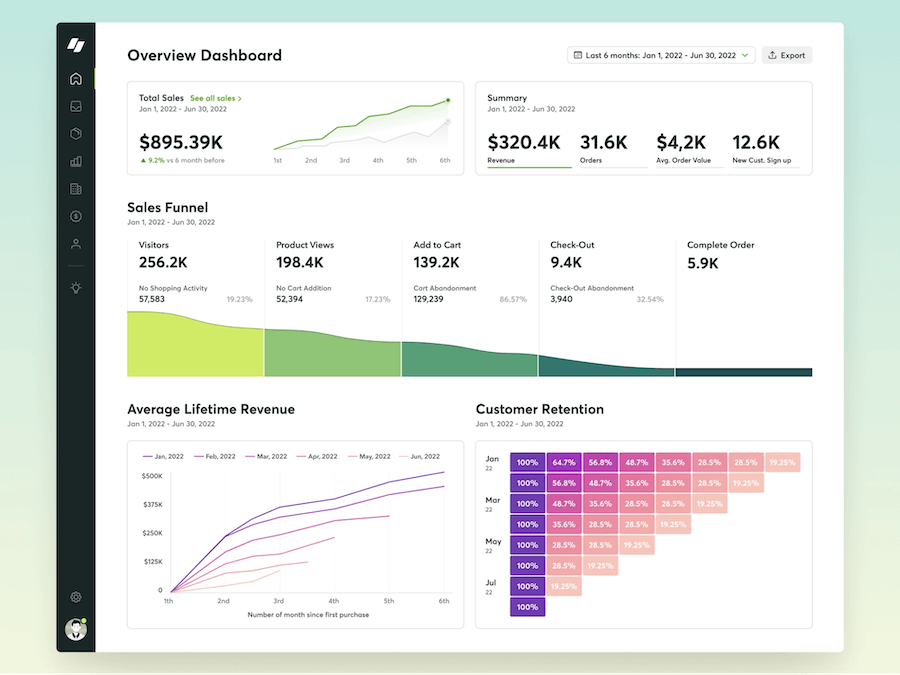
Also Read
Looking for Designing & Branding Services / Solutions?
Seize and experience the transformative impact of Design and Branding Services & Solutions with ColorWhistle.
Drill Down into Specific Data Points with Customized Dashboard Applications
Designing an effective dashboard is a challenging but rewarding task for any web designer or developer. By understanding the basics of how people’s brains process information, you can create dashboards that are both visually appealing and easy to understand.
The examples we’ve listed above should give you a good starting point for your design projects. If you need help creating a stunning and user-friendly dashboard, contact us today.
Our team of experts would be happy to partner with you to create a beautiful and functional modern dashboard UI. Harness the power of Social Media Creative Design to make your dashboard visually compelling and shareable across platforms. Elevate your design projects with our expertise
What’s Next?
After absorbing the insightful blog, what comes next? What action can be taken to further progress and success in this field of study? Take a moment to consider your steps forward.
Read Similar Content
Wish to Explore Our Services?
Have an Idea? or Project Scope?
In quest of the Perfect Design & Branding Solutions Buddy?
Be unrestricted to click the other trendy writes under this title that suits your needs the best!
- Online Business Models for Technology Businesses
- Best Branding Practices to Increase Your Brand Power!
- Manufacturing Product Configurators That Help You Move In Customer-Centric Direction
- Technology Outsourcing Services – Statistics & Trends
- Razorpay Integrations: Online Business Payment Gateway Pocketbook
- Online Businesses That Did Amazingly Well Even in Pandemic
- Lead Generation vs Branding – how businesses must utilize it from digital investments?
